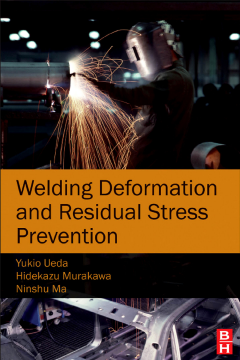
BOOK
Welding Deformation and Residual Stress Prevention
Yukio Ueda | Hidekazu Murakawa | Ninshu Ma
(2012)
Additional Information
Book Details
Abstract
Generally, welding produces welding deformation and residual stress in the products, which influences the quality and performance of the products. Although many engineers and researchers have made great effort how to control these incidents, they have still remained unresolved. Welding Deformation and Residual Stress Prevention provides a unique computational approach to the prediction of the effects of deformation and residual stress on materials. The goal is to provide engineers and designers with the ability to create their own computational system for predicting and possibly avoiding the problem altogether.
- The basic theories including "theory of elastic-plastic analysis" and "inherent strain theory" , and analysis procedures are described using a simple three-bar model.
- Online simulation software to perform basic analysis on welding mechanics
- Examples of strategic methods and procedures are illustrated to have solved various welding-related problems encountered in the process of construction.
- Appendices present data bases for welding residual stresses, temperature dependent material properties, etc.
